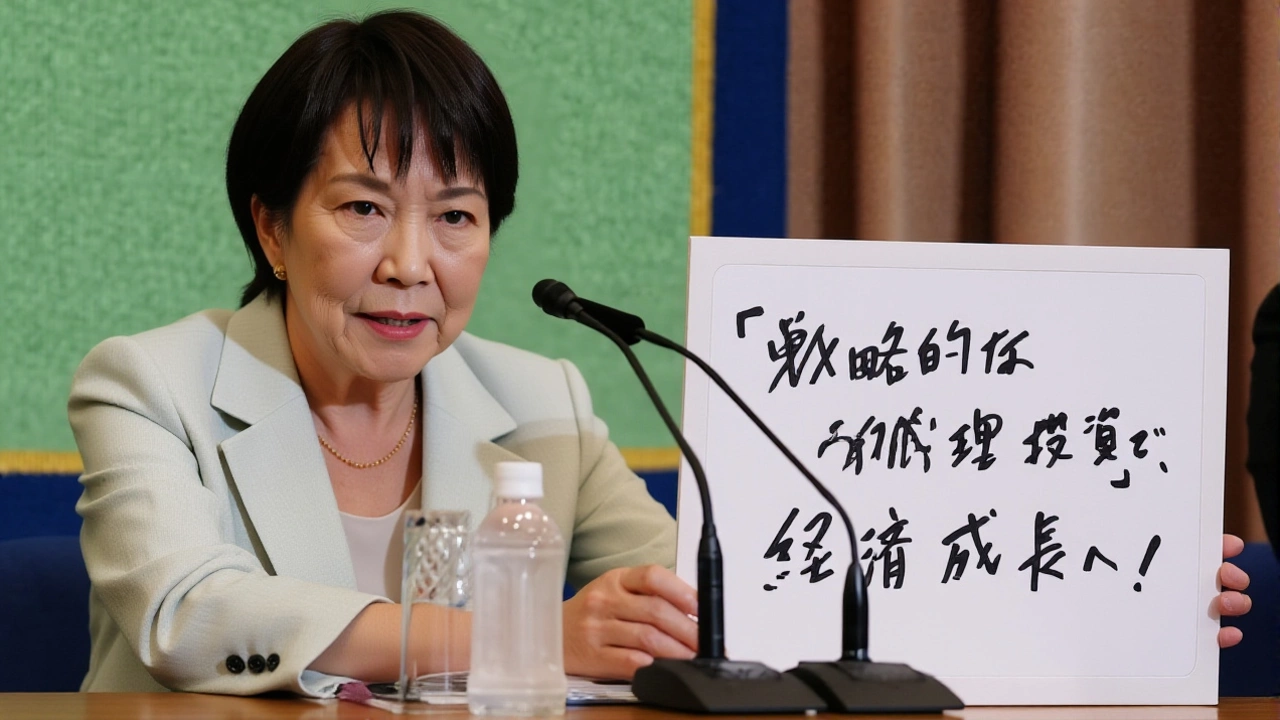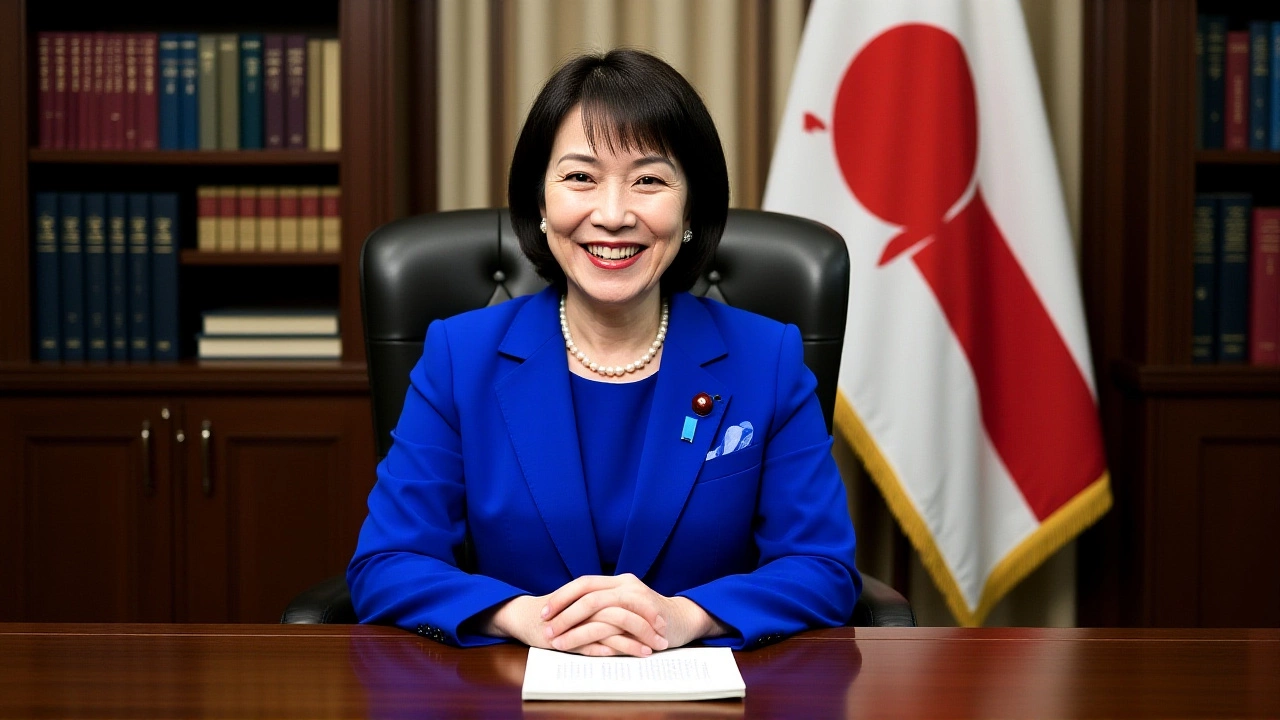When Sanae Takaichi, a 64‑year‑old LDP member from Nara, was elected president of the Liberal Democratic Party on 4 October 2025, Japan witnessed its first female leader of the ruling party. The vote took place during the LDP presidential election, a two‑round contest triggered by Prime Minister Shigeru Ishiba’s resignation announcement on 7 September. The win matters because it reshapes the power balance within a party that has ruled Japan almost uninterrupted since 1955.
Historical Context: Women in Japanese Party Politics
Japan’s post‑war political arena has long been dominated by male dynasties. While women earned the right to vote in 1945, only a handful have broken through the upper echelons of the Liberal Democratic Party. The last time a woman reached a top‑tier leadership role was in 2001, when Yuriko Koike became the first female governor of Tokyo, but she never led the LDP itself. Takaichi’s ascent, therefore, marks a rare deviation from the entrenched family‑business model that defines much of Japanese conservatism.
Detailed Developments: Vote Numbers and Campaign Moves
The LDP’s internal ballot consists of 295 Diet members and an equal number of party‑wide delegates representing each prefecture. In the first round on 3 October, no candidate cleared the 50 % threshold, pushing the contest to a runoff. Takaichi gathered 183 votes (31.07 % of the total) while Shinjirō Koizumi, the 44‑year‑old son of former prime minister Junichiro Koizumi, secured 164 votes (27.84 %).
When the second round unfolded on 4 October, Takaichi clinched 185 votes — 149 from Diet members and 36 from prefectural representatives — beating Koizumi’s 156 (145 from the Diet, 11 from the regions). The final tally translated to 54.25 % for Takaichi against 45.75 % for Koizumi, a margin that stunned many political observers who had tipped the younger candidate to win.
During the campaign, Takaichi deliberately softened her rhetoric, adopting the label “moderate conservative” to broaden appeal. She skirted a previously stated intention to visit the controversial Yasukuni Shrine as prime minister, a stance that had once ignited diplomatic friction with China and South Korea. By contrast, Koizumi leaned heavily on his family name, promising bold reforms but offering less concrete policy detail.
Responses from Key Stakeholders
Inside the LDP, senior figures such as former cabinet minister Abe Shinzo (posthumously honored in party minutes) had reportedly backed Takaichi for her experience in ministerial portfolios ranging from Okinawa affairs to science and technology policy. “Her record shows she can navigate both the bureaucracy and the electorate,” said an unnamed party elder.
Opposition leader Fumio Kishida (who serves as a senior LDP figure but the current opposition leader in our story) called the result “a historic moment for gender equality, yet the real test will be how she governs.” Meanwhile, women’s rights groups such as Women for Japan issued a cautious statement: “We welcome a female LDP president, but we will monitor whether policies on childcare, pay equity, and workplace harassment actually change.”
Impact Assessment and Expert Analysis
Political scientists at Kobe University note that Takaichi’s victory could shift intra‑party debates toward a more centrist platform, especially on fiscal stimulus and defense spending. Dr. Haruto Yamashita, a senior fellow at the university’s Center for Asian Politics, explained: “Her moderate stance may placate younger voters who have been drifting toward the opposition, while still satisfying the party’s traditional base.”
Economically, analysts project that the LDP’s continuity under a familiar face will keep the Bank of Japan’s ultra‑loose monetary policy intact, at least in the short term. However, the presence of a woman at the party’s helm could encourage corporate boards to consider gender‑diversity reforms, a trend already gaining traction in Europe and North America.

Future Implications: From Party President to Prime Minister?
In the LDP’s system, the party president normally becomes prime minister, a transition that could happen within weeks if the Diet confirms the appointment. Takaichi has hinted that she will prioritize “stable growth, social security reform, and a pragmatic foreign‑policy stance.” Yet skeptics warn that her lack of a strong personal following in the Diet may limit her ability to push through ambitious legislation.
Internationally, allies such as the United States are watching closely. An official from the U.S. Embassy in Tokyo said, “Tokyo’s partnership with Washington remains strong; we look forward to a smooth transition and continued cooperation on regional security.” The most pressing question remains how Takaichi will navigate the delicate issue of Yasukuni Shrine visits, a flashpoint that could reignite tensions with neighboring countries.
Background Deep Dive: Takaichi’s Political Journey
Born on 7 March 1961 in Nara, Takaichi entered politics after graduating from Kobe University with a degree in law. Early in her career, she served as a heavy‑metal drummer in a university band—a tidbit she occasionally mentions to humanize her image.
Her rise through the LDP ranks accelerated under Prime Minister Shinzō Abe, where she held six ministerial posts, including Minister of State for Youth Affairs and Gender Equality. In August 2007, she made headlines as the sole Abe cabinet member to accompany former prime minister Junichiro Koizumi to Yasukuni Shrine on the war‑ending anniversary, a move that cemented her reputation as a nationalist‑leaning figure.
Despite those credentials, Takaichi has always positioned herself as an outsider to the hereditary political families that dominate the LDP. She often emphasizes her Nara roots, declaring, “I’m a woman of Nara, raised in the ancient land of Yamato,” to appeal to voters outside the traditional power circles.
- First round votes: Takaichi 183 (31.07 %), Koizumi 164 (27.84 %).
- Runoff result: Takaichi 185 (54.25 %), Koizumi 156 (45.75 %).
- Total LDP votes: 590 (295 Diet members + 295 prefectural delegates).
- Key ministries held: Okinawa & Northern Territories, Science & Technology, Innovation, Youth Affairs, Food Safety.
What’s Next for Japan?
Parliament is expected to convene within ten days to confirm Takaichi’s appointment as prime minister. If confirmed, her first cabinet shuffle will likely feature a mix of seasoned veterans and younger reformists, an attempt to balance continuity with the public’s appetite for change.
Meanwhile, civil‑society groups are gearing up for a possible push on women’s‑policy reforms, betting on the symbolic power of a female leader to translate into concrete policy.
Frequently Asked Questions
How does Takaichi’s victory affect women’s representation in Japanese politics?
Her win breaks a decades‑long glass ceiling in the country’s dominant party, signaling that women can attain top leadership positions. While the change doesn’t automatically raise the number of female lawmakers, it is likely to inspire parties to field more women candidates and could accelerate legislative attention to gender‑equality measures such as childcare support and pay‑gap audits.
What were the main reasons Shinjirō Koizumi lost the runoff?
Analysts point to his relative inexperience and over‑reliance on family legacy as key factors. While his youthful image appealed to some, many senior LDP members feared a lack of policy depth, especially on security and fiscal matters, prompting them to swing their votes to the more seasoned Takaichi.
Will the new LDP leadership change Japan’s foreign‑policy stance?
Takaichi has pledged a “pragmatic” approach, which suggests continuity with existing alliances, especially the U.S. security pact. However, her past vocal support for visiting the Yasukuni Shrine could raise diplomatic friction, so she may adopt a more calibrated tone to avoid upsetting regional partners.
What timeline can we expect for her possible appointment as prime minister?
The Diet typically confirms the LDP president within two weeks of the party vote. If no major opposition blocks arise, Takaichi could be sworn in by mid‑October, with her first cabinet meeting scheduled shortly thereafter.
How might her presidency influence Japan’s economic policy?
Given her past emphasis on innovation and youth affairs, she is expected to maintain stimulus measures while pushing for tech‑driven growth. Experts anticipate modest reforms to corporate governance and a possible focus on increasing female labor participation as part of broader productivity goals.
